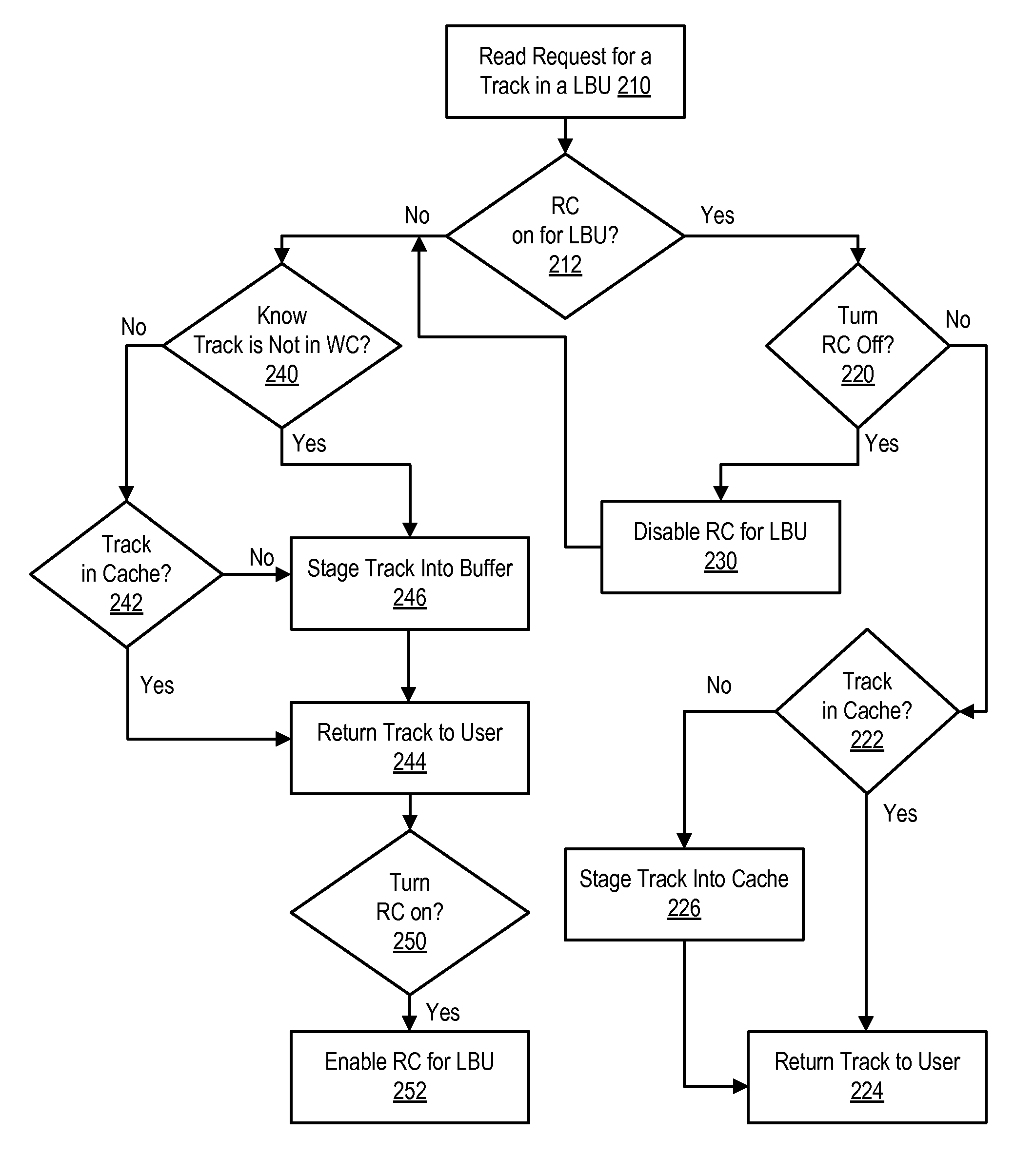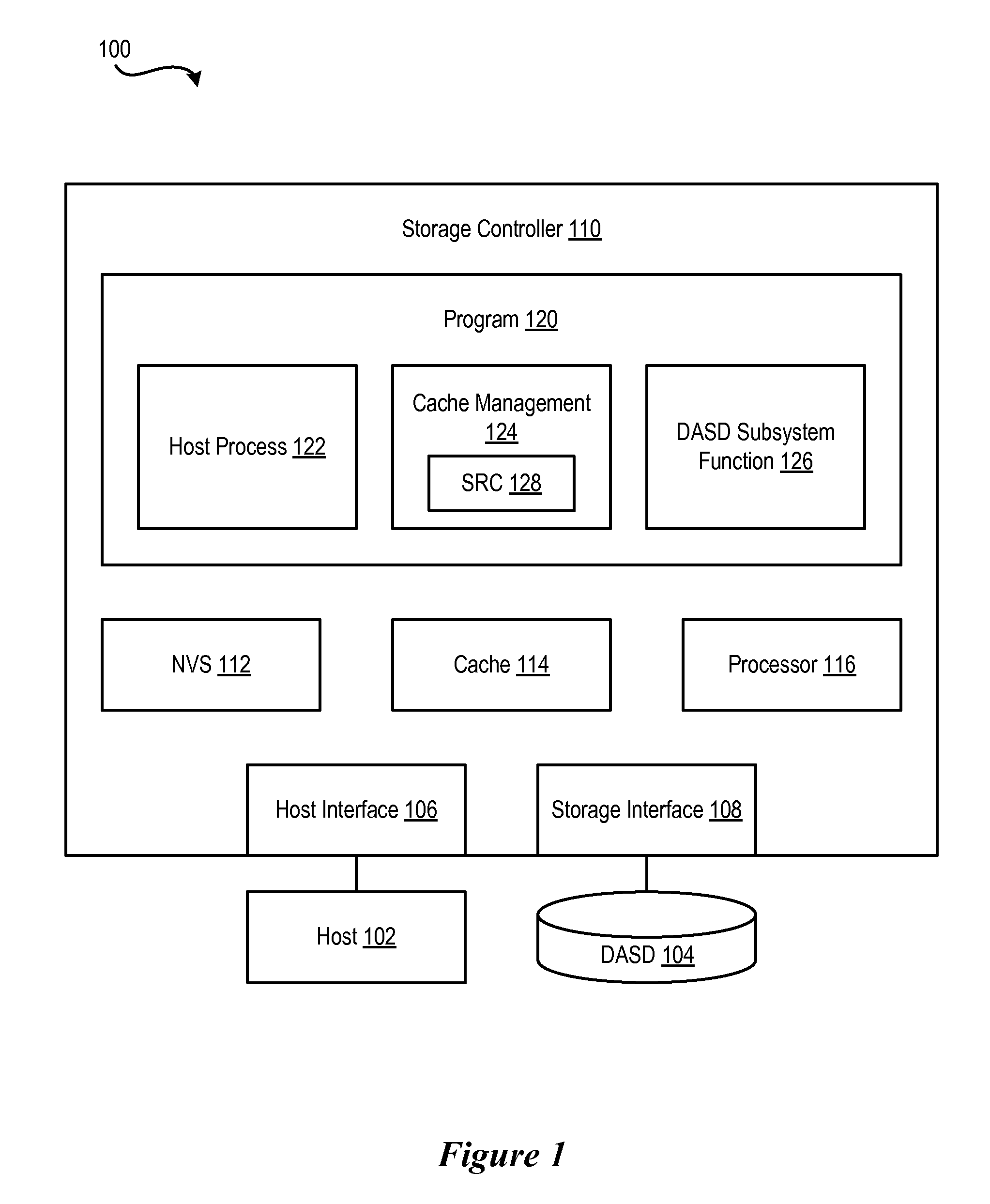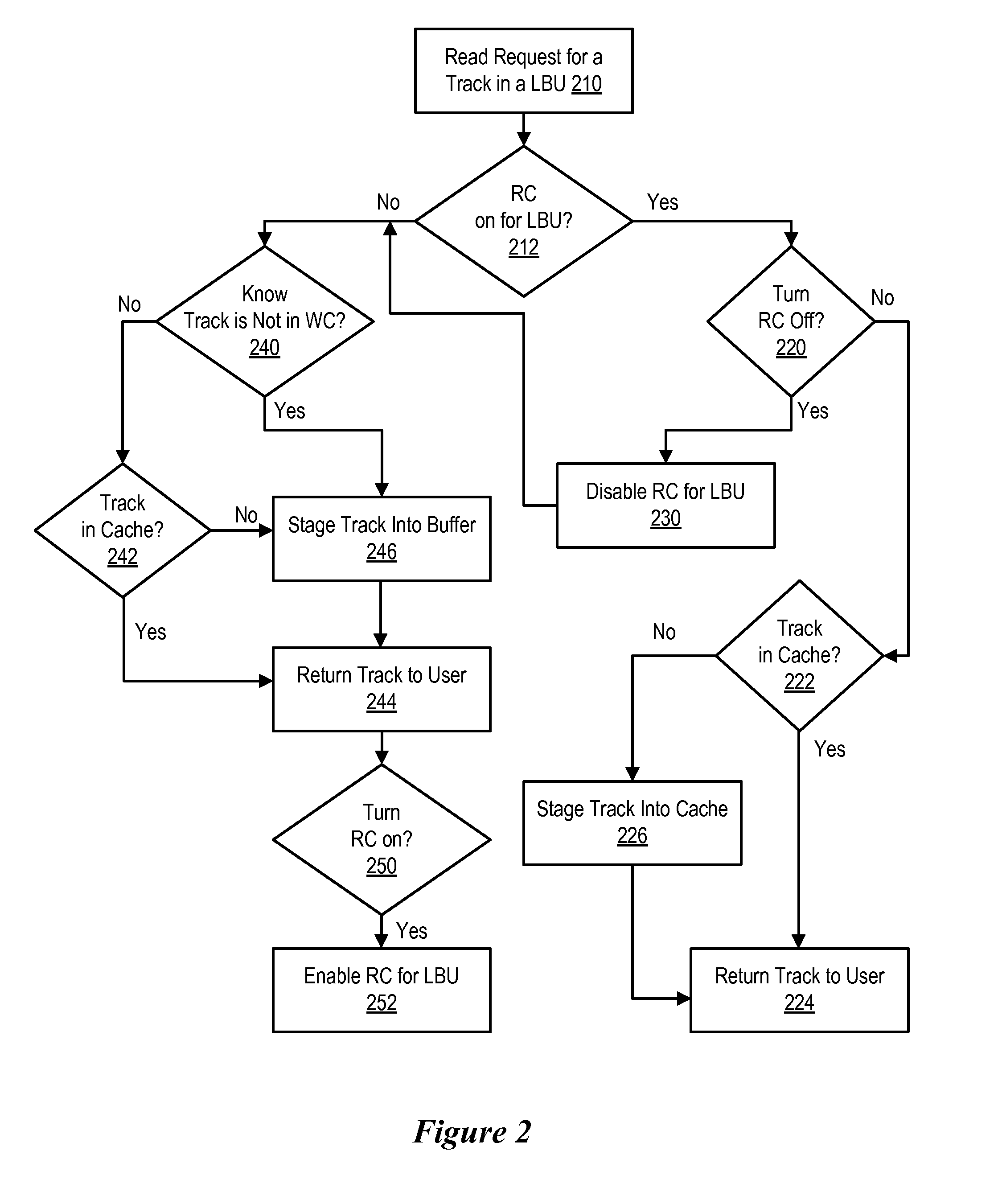Method for Selectively Enabling and Disabling Read Caching in a Storage Subsystem
- Summary
- Abstract
- Description
- Claims
- Application Information
AI Technical Summary
Benefits of technology
Problems solved by technology
Method used
Image
Examples
Embodiment Construction
[0022]FIG. 1 illustrates a hardware and software environment in a storage system 100 in which the present invention may be implemented. At least one host 102 is in data communication with storage device, such as a DASD 104, via a host interface 106 and a storage interface 108 in a storage controller 110. The host 102 may be any host system known in the art, such as a mainframe computer, workstation, etc., running under an operating system such as WINDOWS.RTM., AIX.RTM., UNIX.RTM., MVS.™., etc. The storage controller 110, host system(s) 102, and DASD 104 may communicate via any network or communication system known in the art, such as LAN, TCP / IP, ESCON.RTM., SAN, SNA, Fibre Channel, SCSI, etc. The DASD 104 may be one or more storage subsystems of hard disk drives, automated storage libraries, optical disks, or any suitable large, non-volatile storage medium known in the art. The storage controller 110 may be any storage controller 110 known in the art, including the IBM 3990 Storage...
PUM
 Login to View More
Login to View More Abstract
Description
Claims
Application Information
 Login to View More
Login to View More - R&D
- Intellectual Property
- Life Sciences
- Materials
- Tech Scout
- Unparalleled Data Quality
- Higher Quality Content
- 60% Fewer Hallucinations
Browse by: Latest US Patents, China's latest patents, Technical Efficacy Thesaurus, Application Domain, Technology Topic, Popular Technical Reports.
© 2025 PatSnap. All rights reserved.Legal|Privacy policy|Modern Slavery Act Transparency Statement|Sitemap|About US| Contact US: help@patsnap.com



